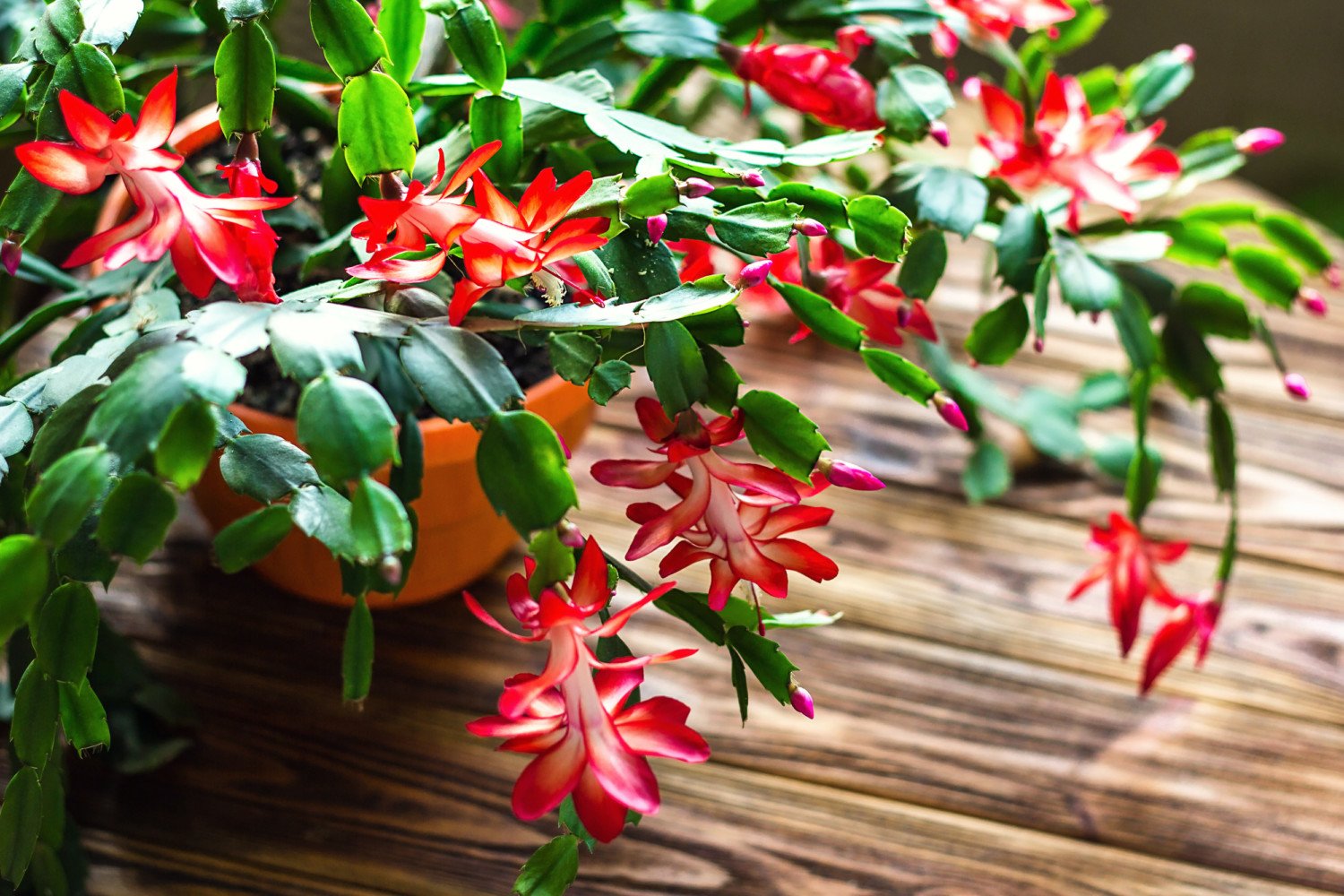
HOLIDAY CACTUS
The holiday cactus (Schlumbergera truncata) is known for many things, but most prominently it is known for showy and reliable cool weather blooms. When the days get shorter and cooler, they send out little buds on the ends of their stems that develop into large, brightly colored flowers. This corresponds with many major holidays celebrated today (at least in the northern hemisphere), hence the common name holiday cactus.
These plants are considered to be true cacti, meaning that despite their native habitat being the humid rainforests of Brazil and their epiphytic growth habit, they are included in the family Cactaceae. These jungle cacti are members of a small genus called Schlumbergera, named for a French cactus collector, Frederic Schlumberger.
LIGHT
Holiday cactus prefer bright light, and happily tolerate some direct sun. Light levels that are
too low will make your plant leggy and weak, and too high will cause burns. If you notice the plant growing thinly, try moving the plant to higher light.
WATERING & SOIL
Similar to their desert dwelling cousins, holiday cactus are sensitive to being overwatered. However, unlike desert species, holiday cactus prefer to only dry out partially between waterings. They should not be allowed to dry out completely, and should be watered when the top of the soil becomes dry to the touch. Holiday cactus should be potted in a rich, quick draining mix that allows water to saturate the root ball evenly, but drain out any excess water quickly.
PRUNING & PROPOGATING
Schlumbergera tend to become woody and lanky over time, so regular trimming can help ensure a strong, full plant. Pruning should ideally be done after the plant has finished blooming, as the blooms typically only occur on the last segment of a branch and removing them prematurely may compromise the blooms. When pruning, hold a leaflet between the thumb and index finger, twist, and pull. The leaflet should pop right off. A sharp, clean pair of scissors work just as well. However, if attempting to propagate, damage to the node may prevent rooting, so keep that in mind when using scissors or shears.
If the node at the bottom of the leaflet remains intact, they can be potted in soil to propagate. Make sure to lightly water the substrate until roots develop. To check for roots, pull lightly on the leaflet. If there is resistance, roots have likely formed. When rooted, the plantlet can be watered normally.
FERTILIZER
Holiday cactus are not particularly heavy feeders, but do appreciate being fertilized regularly. While they are actively growing, fertilize with a balanced all-purpose, orchid, or high acid fertilizer. If your plant is not actively growing, discontinue the use of fertilizer or cut the frequency back.
SPECIAL NOTES
The blooms of a holiday cactus are triggered by the length of daylight, and cooler temperatures (40° to 65°F) at night. They typically set bud when they receive 12 hours of daylight followed by 12 hours of darkness, which naturally occurs in the late fall. It is helpful to keep them next to a window in order for the change in temperature to be noticeable for the plant as well. However, keeping these plants in a location where artificial house or street lights shine on them all night may prevent them from setting bud. In fact, this is a good place to start troubleshooting if a plant is not setting bud. If you are unable to cover a window or prevent lights from being on inside, putting the plant in a dark (preferably cool) closet for 12 hours at night will usually do the trick.
If your holiday cactus is setting buds, but they keep falling off, there are a couple of common reasons for this. The first would be inconsistent watering. Mentioned above, holiday cactus should not be dried out completely. If they become too dry while attempting to bloom, they will often drop their buds. The second reason would be repotting while the plant is still setting buds. Holiday cactus typically experience shock when being repotted, and blooming is a high energy process. Dropping buds help the plant conserve energy in times of stress.



